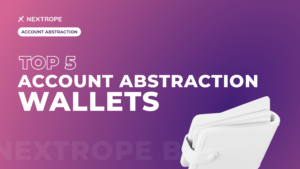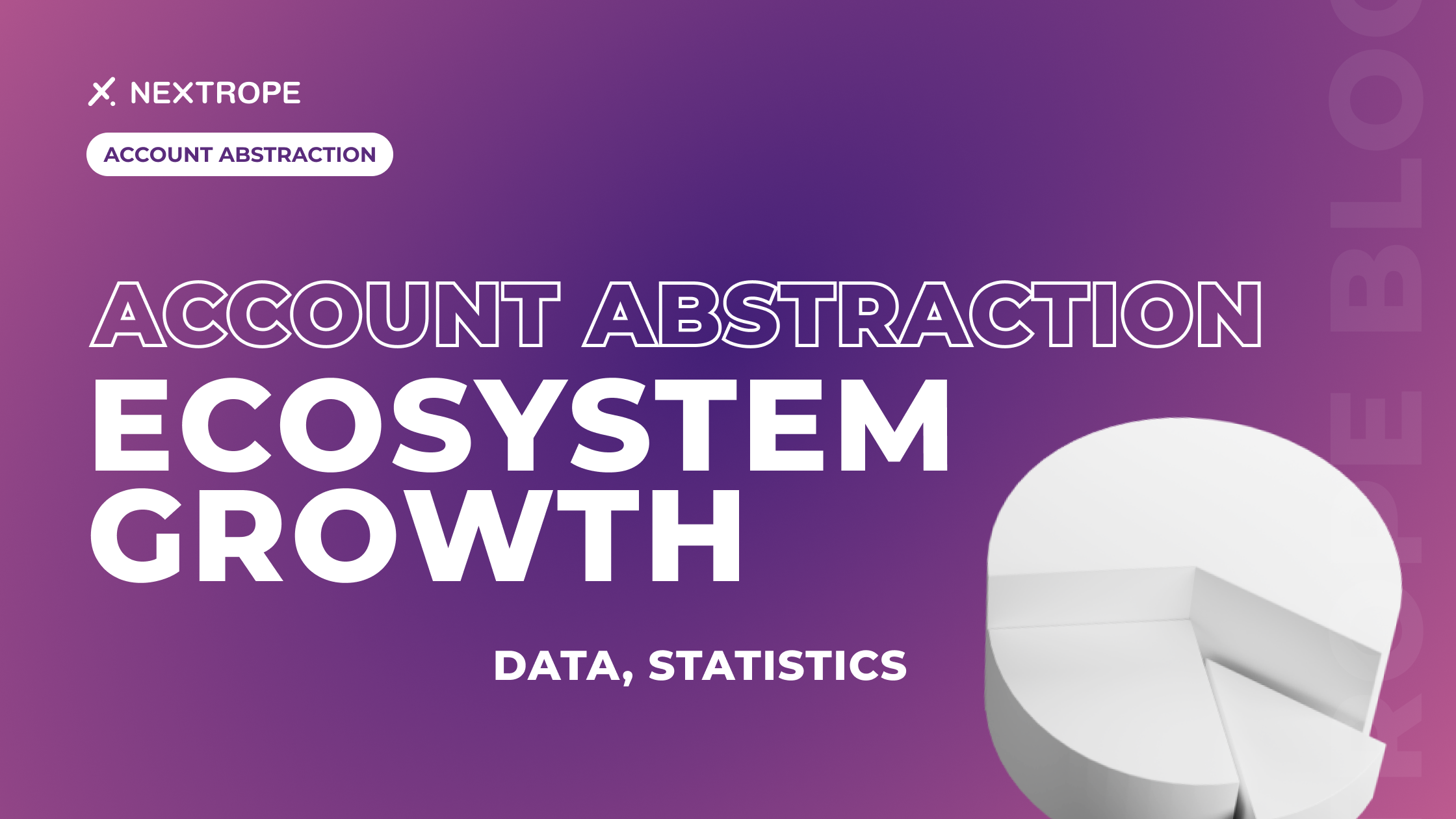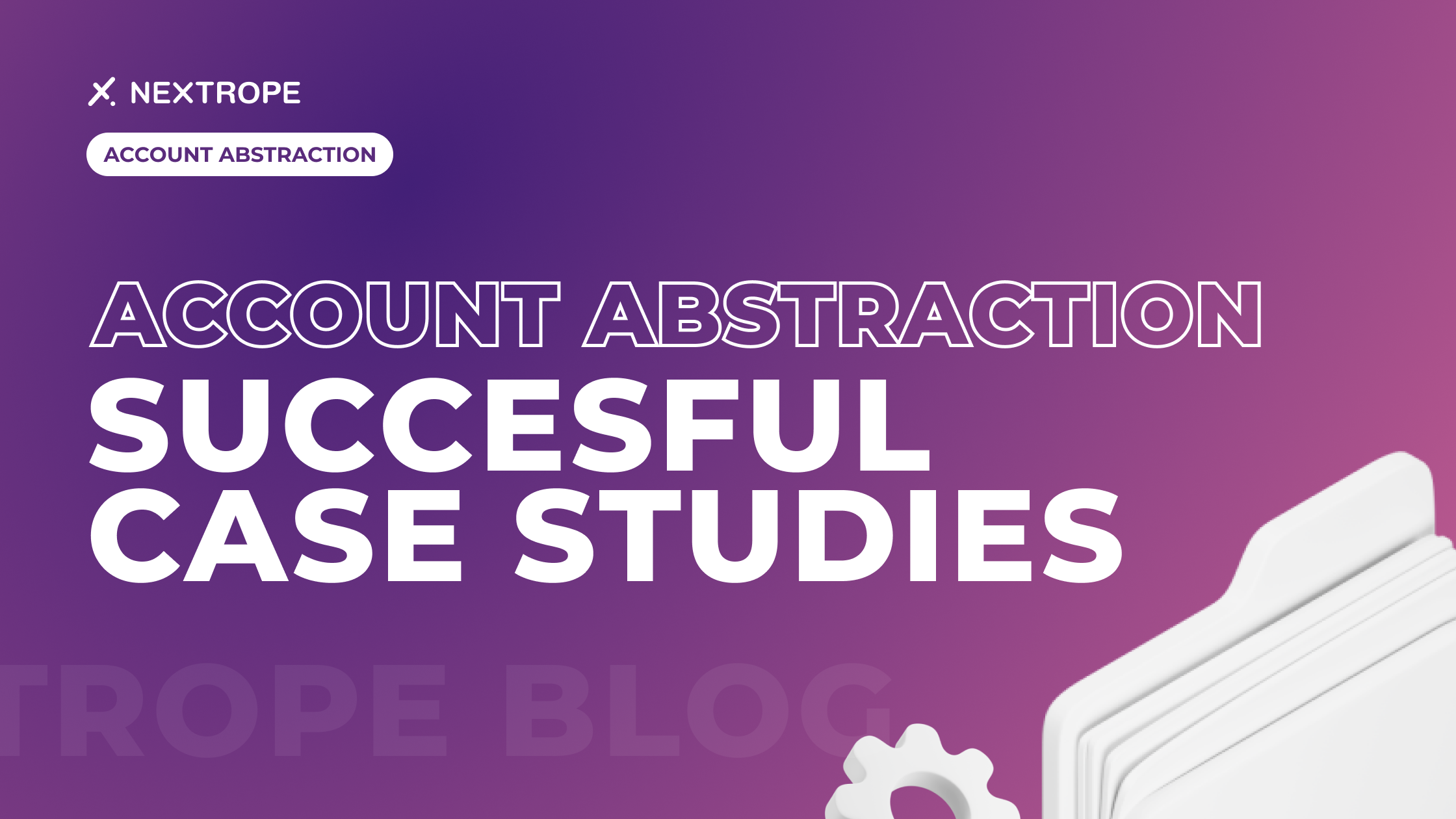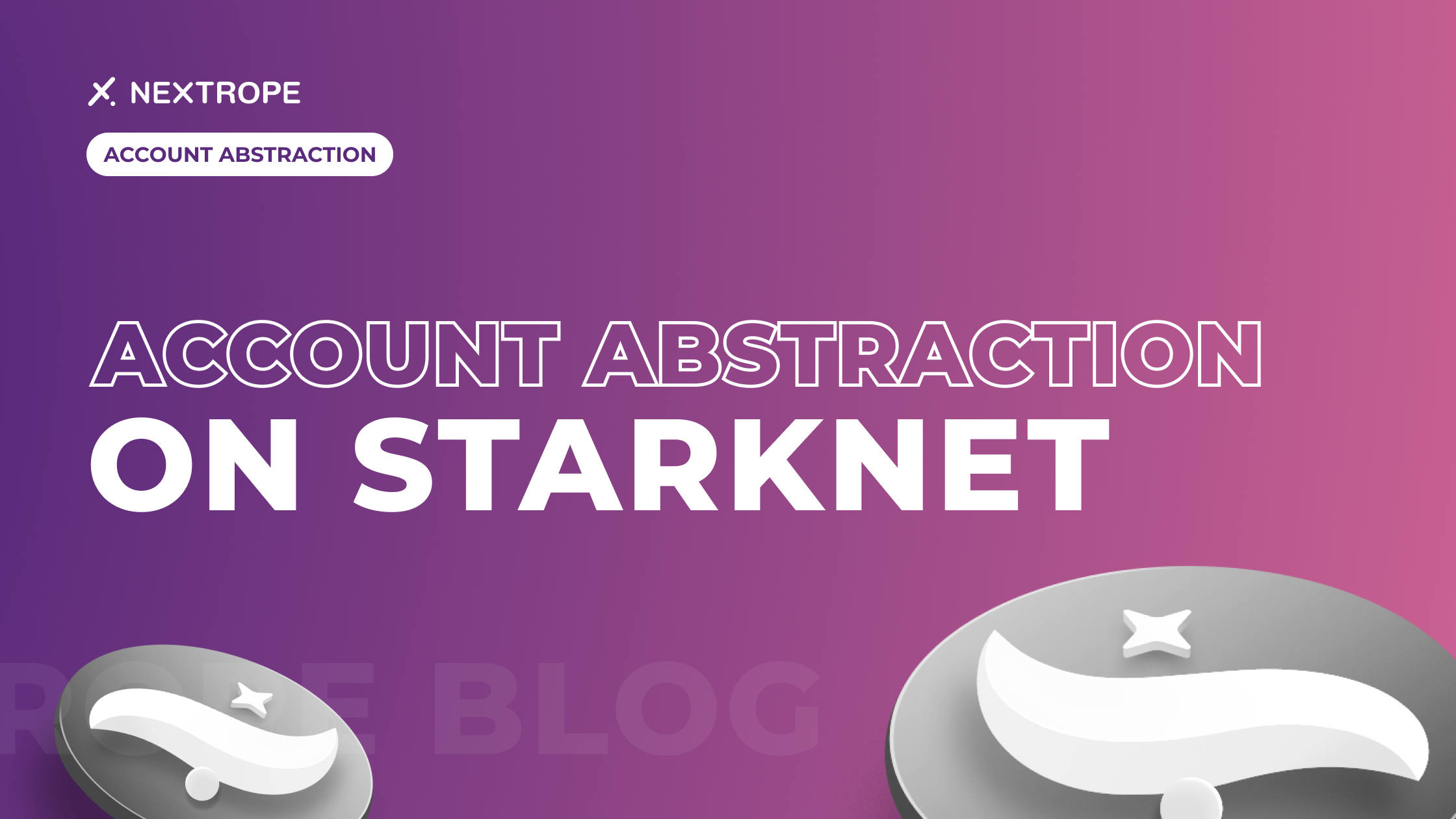Blockchain technology has continuously evolved, introducing new paradigms that enhance user experience and security. Among these innovations, Account Abstraction Wallets have gained prominence for their unique approach to managing blockchain interactions. These wallets blur the traditional lines between contract and Externally Owned Accounts (EOAs), offering a unified and simplified interface. This approach not only streamlines transactions but also opens up new possibilities for smart contract integration, enhancing both functionality and security.
In this article, we will delve into the top five Account Abstraction Wallets. Our selection criteria focus on security features, ease of use, integration capabilities, and the innovative use of smart contracts to provide a seamless user experience. Whether you are a blockchain enthusiast, a developer, or someone curious about the future of digital wallets, this guide will provide valuable insights into the cutting-edge of wallet technology.
Join us as we explore these top-tier Account Abstraction Wallets, each offering unique features that set them apart in the blockchain ecosystem.
1. Argent - TOP 5 Account Abstraction Wallets
Argent stands out as a trailblazer in the domain of smart contract wallets, particularly appealing to those new to the cryptocurrency scene. This France-based company has been at the forefront of account abstraction initiatives since 2017-2018, working alongside other pioneers like Safe and Ambire. Its focus on Layer 2 solutions places it at the cutting edge of blockchain technology.
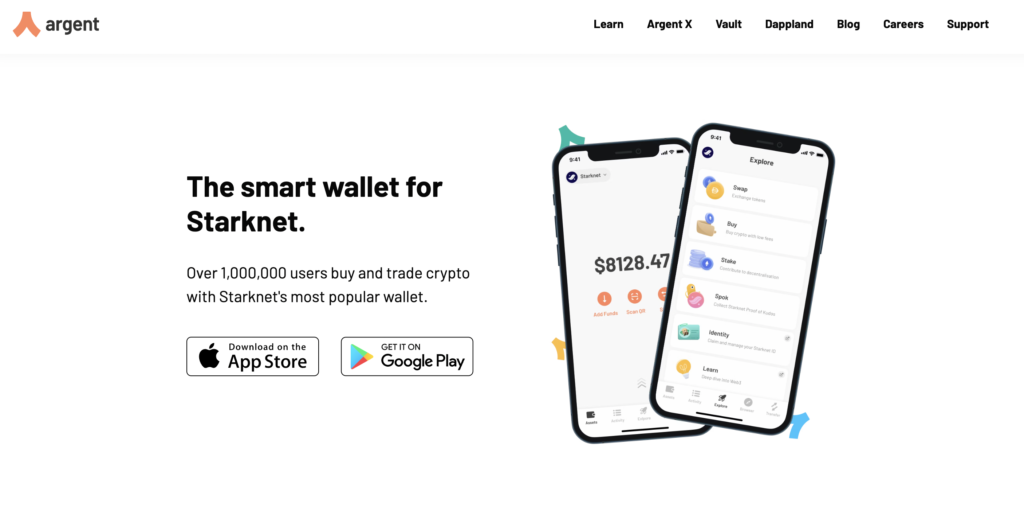
Source: Argent
Key Features
- User-Friendly Interface for Newcomers. Argent is designed to be approachable and easy to use, making it an ideal choice for individuals who are just beginning their journey into the world of cryptocurrency.
- Layer 2 Specialization. With its deployment on the Ethereum Mainnet and Layer 2 platforms such as zkSync and StarkNet, Argent is well-positioned to handle high-speed and cost-efficient transactions, which is integral for the future of Web3 operations.
- Advanced Smart Account Capabilities:
- Social Recovery System. A unique feature that allows users to recover their accounts through trusted contacts, enhancing security without compromising convenience.
- Multi-Signature Support. Offers added security for transactions, requiring multiple approvals for added peace of mind.
- Fee Payments in Stablecoins. Users can pay transaction fees in stablecoins, ensuring stability and predictability in transaction costs.
- High-Speed Batch Transactions. Argent supports multicall or batch transactions, allowing users to execute multiple operations swiftly and efficiently.
Design and Accessibility
- Aesthetically Pleasing and Secure Self-Custody. The wallet's design is not only visually appealing but also emphasizes user-friendly self-custody, ensuring users have full control over their assets.
- Mobile-First Approach. Available on both iOS and Android, Argent prioritizes mobile users, providing a seamless experience for managing digital assets on the go.
- Argent X for Browser Users. For those preferring browser wallets, Argent X offers a robust solution for navigating and operating on the StarkNet platform.
2. Avocado - TOP 5 Account Abstraction Wallets
Avocado, created by Instadapp, is a smart contract wallet that revolutionizes the way users interact with multiple blockchain networks. Launched in March 2023, Avocado is a relatively new entrant in the field, but it's quickly gaining attention for its innovative approach to decentralized finance (DeFi) transactions.

Source: InstaApp
Key Features
- Multi-Network Transactions on a Single Network. Avocado uniquely allows users to perform transactions across multiple networks while remaining connected to just one, removing the hassle of switching between different blockchains.
- Deterministic Smart Contract. Each wallet is algorithmically linked to the user's address, offering a non-custodial and secure way to manage assets. This deterministic approach ensures consistency and security in transactions.
- Network Abstraction. Displays all balances from various networks in a single, unified interface, providing a holistic view of a user's assets.
- Gas Abstraction with USDC. Simplifies the payment of transaction fees by using USDC as the native gas token, ensuring predictability and stability in transaction costs.
- Account Abstraction for Enhanced Functionality. Avocado supports modularity in design, which is beneficial for various use cases, including assigning authority roles, implementing recovery mechanisms, and bolstering security.
Unique Selling Points
- Consistent Address Across Chains. With Avocado, users maintain the same address on all chains, significantly reducing the complexity and potential errors associated with managing multiple addresses.
- Integration with Instadapp's DeFi Platform. As a product of Instadapp, a platform that connects protocols and decentralized applications (dApps) on the Ethereum Virtual Machine (EVM), Avocado seamlessly integrates with various DeFi protocols, functioning like a blockchain aggregator.
Limitations and Future Potential
- Current Limitation on Transaction Fees. As of now, transaction fees on Avocado are exclusively paid in USDC, which may limit some use cases. However, the underlying technology holds the potential for future expansions and more diverse options.
Accessibility
- Decentralized Web Application. Available as a dApp, Avocado can be accessed both on desktop and mobile, catering to a wide range of users.
3. Ambire Wallet - TOP 5 Account Abstraction Wallets
Ambire Wallet, launched in late 2021, has quickly established itself as a formidable player in the realm of account abstraction wallets. Originating as a pivot from the AdEx Network, a blockchain advertising solution, this Estonia-based company combines a user-centric approach with sophisticated technology.
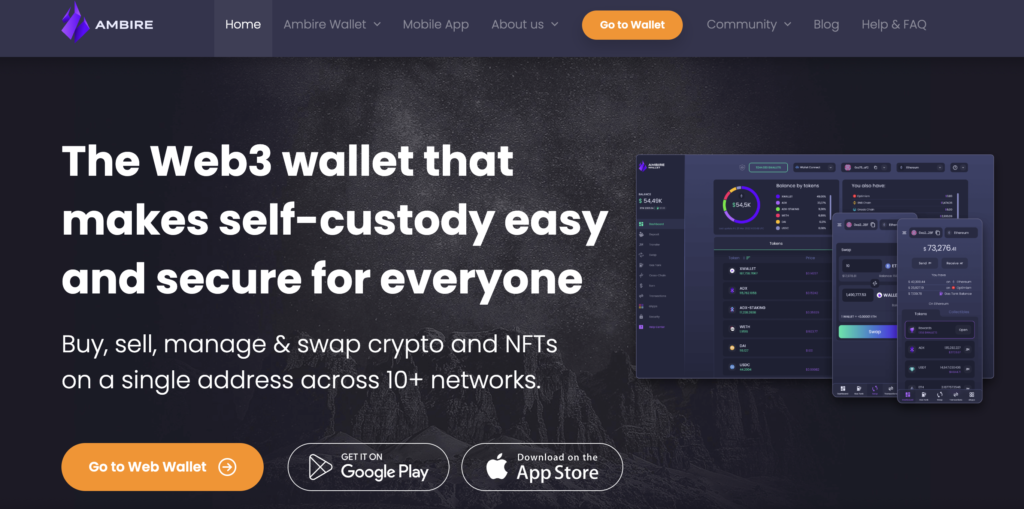
Source: Ambire
Key Features
- Advanced Functionalities from the Start. Ambire Wallet was designed to include features like batch transactions, multi-signature capabilities, and the option to pay fees in stablecoins across various blockchain networks.
- User-Friendly Interface with High-Security Levels. The wallet is tailored to be accessible for newcomers while offering the complexity and security that seasoned crypto enthusiasts demand.
- Innovative Gas Fee-Saving Mechanisms. Ambire introduced the Gas Tank feature, which allows users to save on transaction fees and choose their preferred token for payment.
Unique Selling Points
- First to Offer Email & Password Sign-Up. Ambire Wallet was the first self-custodial wallet to implement an email and password sign-up process, effectively blending Web3 technology with Web2 user experience best practices.
- A Versatile Tool for All Users. The wallet's design is intuitive and informative, making it suitable for both crypto beginners and experienced traders, or 'whales'.
- Advanced DeFi Features. Ambire Wallet includes an in-built bridge, functionalities to earn and swap, as well as a comprehensive dApp Catalog, catering to diverse needs within the DeFi ecosystem.
Compatibility and Future Plans
- Support for Multiple EVM Chains: The wallet currently supports over 10 Ethereum Virtual Machine (EVM) chains, both Layer 1 and Layer 2, with plans to expand further.
4. Sequence - TOP 5 Account Abstraction Wallets
Sequence Wallet, launched by Horizon in late 2022, has rapidly carved a niche for itself in the Account Abstraction Wallet landscape. Initially envisioned as a FinOps solution for business-to-business (B2B) applications, Sequence has expanded its horizons to appeal to a broader consumer base.

Source: Sequence
Evolution and Key Features
- From B2B FinOps to Broad Consumer Appeal. While it began with a focus on B2B financial operations, Sequence has adeptly incorporated a range of best practices and innovations in account abstraction, making it a versatile tool for individual consumers.
- Seamless Web3 Experience. Echoing the goals of wallets like Ambire, Sequence is dedicated to providing an intuitive and seamless Web3 experience, backed by a sophisticated tech stack functioning across multiple blockchain networks.
Gaming-Oriented Features
- Gaming DNA of Horizon. The wallet’s development under Horizon, known for its gaming background, is evident in the features tailored for the Web3 gaming community.
- Ideal for Gamers. Sequence excels as a gamer-friendly wallet, offering capabilities such as swift fund transfers between games, support for game-specific tokens, and an integrated chat system, enhancing the gaming experience in the Web3 space.
Accessibility and User Interface
- Web Application for Desktop and Mobile. Sequence is accessible as a web app, ensuring users can manage their digital assets and engage with Web3 applications conveniently on both desktop and mobile devices.
5. Safe - TOP 5 Account Abstraction Wallets
Safe, originally known as Gnosis Safe before gaining independence and rebranding in 2022, is one of the oldest and most trusted smart contract wallets in the Ethereum ecosystem. With roots in the German tech sector, Safe has established itself as a leader in secure asset management and ownership standards.
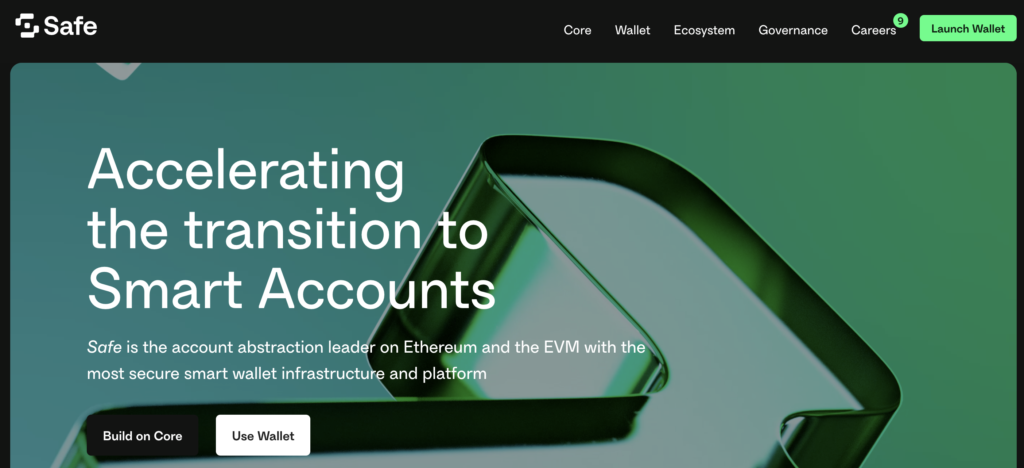
Source: Safe
Key Features and Evolution
- Focus on Security and Superior Ownership Standards. Safe's primary objective has always been to fortify the custody protocol, ensuring the highest levels of security for its users.
- Prominence in Collaborative Asset Management. The wallet is especially favored by Decentralized Autonomous Organizations (DAOs) and collaborative platforms, owing to its robust solutions for collective asset management.
- Advanced Account Abstraction Features:
- Multi-Signature Options: Offers enhanced security measures for asset management.
- Transaction Simulations: Allows users to preview the outcomes of their transactions before finalizing them.
- Internal App Store: Provides a platform for users to explore and interact with various Web3 applications.
Unique Selling Points
- Largest Share of On-Chain Funds. As of the end of 2022, Safe held the largest share of on-chain funds in the crypto wallet space, a testament to its reliability and popularity.
- Support for Multiple EVM Chains. Safe is compatible with more than 12 Ethereum Virtual Machine (EVM) chains, ensuring broad usability across the blockchain ecosystem.
User Experience
- Complex Interface for Advanced Users: Unlike other wallets, Safe does not prioritize streamlining user experiences or simplifying onboarding. Its interface, while comprehensive, may be challenging for newcomers to the crypto world.
Accessibility
- Mobile and Web Applications: Safe is accessible as both a mobile app for Android and iOS users and as a web application, catering to a diverse range of users.
Conclusion
In the dynamic world of blockchain technology, Account Abstraction Wallets like Argent, Avocado, Ambire, Sequence, and Safe are at the forefront, each offering distinct features to cater to various user needs. From enhancing user experience for newcomers to prioritizing security for advanced users, these wallets are integral in driving the adoption and evolution of cryptocurrency management. As the blockchain landscape continues to evolve, these innovative wallets are paving the way towards a more accessible and secure digital future.
 en
en  pl
pl 
